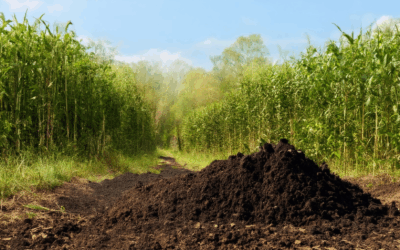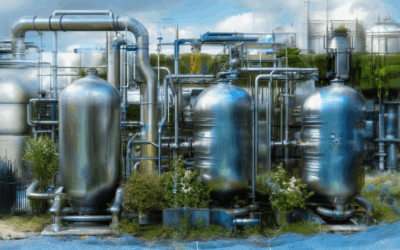As the world increasingly prioritizes sustainability, innovative approaches to managing waste have emerged as critical solutions to global environmental challenges. Among these approaches, sustainable waste reprocessing stands out as a transformative strategy that not only reduces waste but also promotes resource conservation and environmental stewardship. By repurposing materials through systematic processes, sustainable waste reprocessing aligns with broader goals of reducing environmental impact and fostering a circular economy. This comprehensive guide delves into the principles, practices, and real-world applications of sustainable waste reprocessing, offering insights into how individuals and industries can contribute to a more eco-conscious future. From understanding the foundational concepts to exploring practical examples and strategies, this article provides a detailed exploration of sustainable waste reprocessing, highlighting its role in achieving long-term environmental and societal benefits.
Key Takeaways
– Adopt the 3 R’s of Sustainability: Reduce, Reuse, and Recycle to minimize waste and promote eco-friendly practices.
– Prioritize Reusable Items: Use water bottles, cloth bags, and other reusable products to cut down on single-use waste.
– Maximize Resource Efficiency: Optimize energy use, reduce unnecessary consumption, and choose sustainable transportation methods.
– Embrace Creative Reuse: Repurpose household items like jars, foils, and clothing to reduce waste and support innovative solutions.
– Leverage Recycling Programs: Ensure proper disposal of materials like glass, plastics, and electronics to contribute to a circular economy.
– Adopt the 10 R Approach: Extend sustainability efforts with Refuse, Rethink, Reduce, Reuse, Repair, Refurbish, Remanufacture, Repurpose, Recycle, and Recover to achieve zero waste goals.
– Promote Circular Economy Practices: Uphold principles that keep resources in use, reduce environmental impact, and foster sustainable product lifecycles.
– Explore Composting and Biogas Solutions: Transform organic waste into valuable resources through composting or anaerobic digestion.

The 5 R’s of Sustainable Practice
Sustainable practices revolve around reducing waste and promoting resource efficiency through a series of interconnected actions known as the 5 R’s:
- Refuse : Refrain from purchasing items that are unnecessary or unnecessary in quantity. Prioritize needs over wants to minimize waste.
- Reduce : Conserve resources by using less water, energy, and materials. Opt for more efficient products and practices to lower consumption levels.
- Reuse : Find creative ways to extend the life of items rather than discarding them. Use containers, jars, and other items multiple times until they no longer serve their purpose.
- Repurpose : Transform discarded items into new forms or objects. For example, mend clothing for new uses or convert scrap materials into something useful.
- Recycle : As a final step, recycle materials that cannot be reused or repurposed. This ensures that as much as possible is kept out of landfills and returned to the production cycle.
By practicing these Rs, individuals can significantly reduce their environmental footprint and promote a more sustainable lifestyle. Each step builds upon the previous one, fostering a holistic approach to minimizing waste and maximizing resource utility.
Most Sustainable Ways to Dispose of Waste
Sustainability in waste disposal focuses on minimizing environmental impact through efficient and eco-friendly methods. Here are some of the most sustainable approaches:
- Recycling: Recycling reduces the demand for raw materials and lowers pollution. It is a cornerstone of sustainable waste management, transforming materials into new products.
- Composting: Composting turns organic waste into nutrient-rich soil, beneficial for agriculture and gardening. It helps reduce landfill waste and improves soil fertility.
- Waste-to-Energy (WTE): Incinerating waste in specialized facilities converts it into energy, reducing landfill use and generating electricity. While emissions are a concern, modern plants often capture CO2.
- Chemical Digestion: Treats hazardous waste with chemicals to break down pollutants, making it safer for disposal. This method is particularly useful for industrial waste.
- Donating Usable Items: Reducing waste starts with not discarding items that still have value. Donating clothes, furniture, and household goods supports charitable causes and reduces landfill contributions.
For maximum sustainability, integrate these methods into your community’s waste management system. Check local guidelines to utilize curbside composting and recycling programs effectively. By adopting a holistic approach that includes reducing, reusing, and recycling, we can create a more sustainable future.

Sustainable Waste Examples
Sustainable waste practices involve reducing, reusing, recycling, and composting materials to minimize environmental impact. Here are some examples:
- Food Scraps Composting: Food scraps can be collected and composted to create nutrient-rich soil amendments, reducing landfill waste and enhancing soil fertility.
- Paper Recycling: Recycling paper helps conserve resources as it requires fewer trees, less water, and less energy compared to producing paper from virgin materials.
- Plastic Upcycling: Chemical recycling transforms plastic waste into reusable materials, reducing the need for raw material extraction and lowering landfill contributions.
- Biochar Production: Through processes like pyrolysis, organic waste can be converted into biochar, a versatile soil amendment that improves agricultural productivity and sequesters carbon.
These practices highlight how waste can be repurposed and managed sustainably, promoting a circular economy and protecting the environment.
For more information on sustainable waste solutions, visit our website .

The Three R’s of Sustainability
Sustainability is often broken down into three fundamental principles known as the “Three R’s”: Reduce, Reuse, and Recycle. These principles guide individuals and organizations toward more environmentally friendly practices.
- Reduce: Minimizing resource consumption by using fewer natural resources. This includes turning off lights, reducing energy usage, and choosing public transportation instead of driving.
- Reuse: Finding new purposes for items that would otherwise be discarded. Examples include using reusable water bottles, cloth bags, or repurposing old furniture.
- Recycle: Processing materials that cannot be reused into new products. Proper recycling involves sorting waste into categories like paper, glass, and plastics, then disposing of it in designated bins.
Adopting these practices helps conserve resources, reduce pollution, and lower energy consumption, contributing to a healthier environment for future generations.
Reduce
- Use reusable water bottles instead of disposable plastic bottles.
- Turn off lights and electronics when not in use to save energy.
- Buy in bulk to reduce packaging waste.
- Use cloth bags for shopping instead of plastic bags.
- Install energy-efficient appliances to lower power consumption.
- Carpool or take public transportation to reduce carbon emissions.
- Plan meals to reduce food waste and grocery trips.
- Unplug devices when not in use to prevent phantom energy drain.
- Choose products with minimal packaging to reduce waste.
Reuse
- Repurpose old clothes as cleaning rags or DIY projects.
- Use glass jars for food storage or as planters.
- Aluminum foil can wrap gifts or line drawer compartments.
- Cardboard can be made into bird feeders or storage boxes.
- Soft drink bottles can double as ice packs.
- Newspaper makes excellent packing material.
- Coffee grounds can be used as garden fertilizer.
- Egg cartons can store holiday decorations or kitchen items.
- Wine corks can be used for arts and crafts projects.
Recycle
- Soda cans are recyclable and can become new bottles or aluminum products.
- Glass bottles can be recycled into new jars or household items.
- Paper products like tissues and paper towels can be recycled into paper goods production.
- Aluminum foil and wrappers can be recycled into new household items.
- Cardboard can be recycled into packaging materials or animal shelters.
- Plastic bottles can be recycled into new plastic products or fibers.
- Electronics can be recycled to extract valuable materials.
- Household hazardous waste should be disposed of properly through recycling centers.
- Clothing and textiles can be donated or recycled into industrial uses.
- Organic waste can be composted or recycled into biogas.

What is the 10 R Approach?
The 10 R approach is a comprehensive framework that builds upon the traditional 3 Rs of sustainability—Reduce, Reuse, and Recycle—to create a more holistic and detailed strategy for achieving zero waste and promoting a circular economy. This approach emphasizes a broader range of actions to minimize waste and maximize resource utilization.
Here are the 10 Rs:
- Refuse : Avoid unnecessary consumption and refuse items that cannot be reused, recycled, or composted.
- Rethink : Consider alternative ways to meet your needs, reducing reliance on disposable products and single-use items.
- Reduce : Minimize waste at the source by choosing products with less packaging, avoiding overconsumption, and repairing items rather than discarding them.
- Reuse : Find creative ways to repurpose items instead of throwing them away. This includes using products for multiple purposes or donating items to those in need.
- Repair : Fix damaged items whenever possible, extending their lifespan and reducing the need for replacements.
- Refurbish : Restore worn-out goods to like-new condition through processes such as remodeling, upgrading, or repainting.
- Remanufacture : Create new products from used materials, ensuring high-quality and functionality.
- Repurpose : Transform materials into new forms or products, preventing waste and contributing to innovation.
- Recycle : Collect and process materials into new products, closing the loop on resource use.
- Recover : Extract valuable resources from waste through processes like composting, incineration, or anaerobic digestion.
The 10 R approach aligns closely with the principles of the circular economy, which focuses on keeping resources in use longer, extracting maximum value from them, and regenerating products and systems at scale. By adopting this approach, individuals and organizations can play a significant role in reducing environmental impact and promoting sustainable practices.
For more insights into sustainable living and innovative solutions, explore our sustainable living guide .




0 Comments